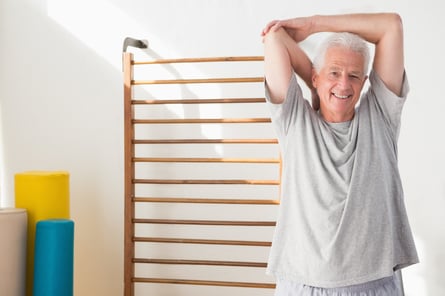In my first and second blogs of the series, I went over four of my guidelines to being successful in fitness:
- Muscle-Activation Exercises
- Simplistic Exercises
- Compound, Multi-joint, Closed-chain Movements
- Grip Exercises
In this third blog, I discuss another guideline.
Guideline 5: Mobility Work
Mobility is the ability to move freely, pain free, and without issue throughout the range of motion of a particular joint. For instance, a client may have an issue getting into the position to do an exercise such as the sit-to-stand. One of the issues I see is related to tight ankles, which is a very common problem. With tight ankles, if the chair is in a low position, the client won't be able to keep their heels on the ground and will shift their weight to the front of the foot, opening the door to a fall or knee injury. To fix this area, I focus on three spots: range-of-motion exercises, stretching exercises (whether it is static or dynamic), and myofascial release exercises.
While stretching is important, too much of it may lead to joint laxity, which could lead to injury. Range-of-motion exercises, such as pointing and flexing with the foot, rolling the ankle around in full circles, and even calf raises will move the joint in its full range of motion and warm up the joints and muscles, which will allow for better stretching and injury prevention. Lastly, myofascial release will help loosen up that gristly tissue, which will lead to more mobility, therefore leading to increased performance, less injury, and better results.
Obviously, many CCRC residents won't be able to do foam rolling by using a foam roller on the floor, and I certainly don’t recommend that. Therefore, I recommend two tools: a mobility stick, which allows the resident to access problem spots on their own from a comfortable position, and a tennis ball, which is small enough to target certain spots, but not so hard that it may hurt too much, as myofascial release is always a bit uncomfortable. The tennis ball can be used while lying on an elevated mat or exercise table, or even used as a tool to loosen up the upper body by placing the ball on a wall and gently pressing the ball into the problem spot, such as the chest or mid back.
While mobility is an issue that affects many areas of the body, lack of ankle mobility is a common problem that I've seen, and you can apply the same mobility principles to many different areas other than the ankles.
***
In my next blog, I give you my sixth and final guideline: Changing exercise variables.

